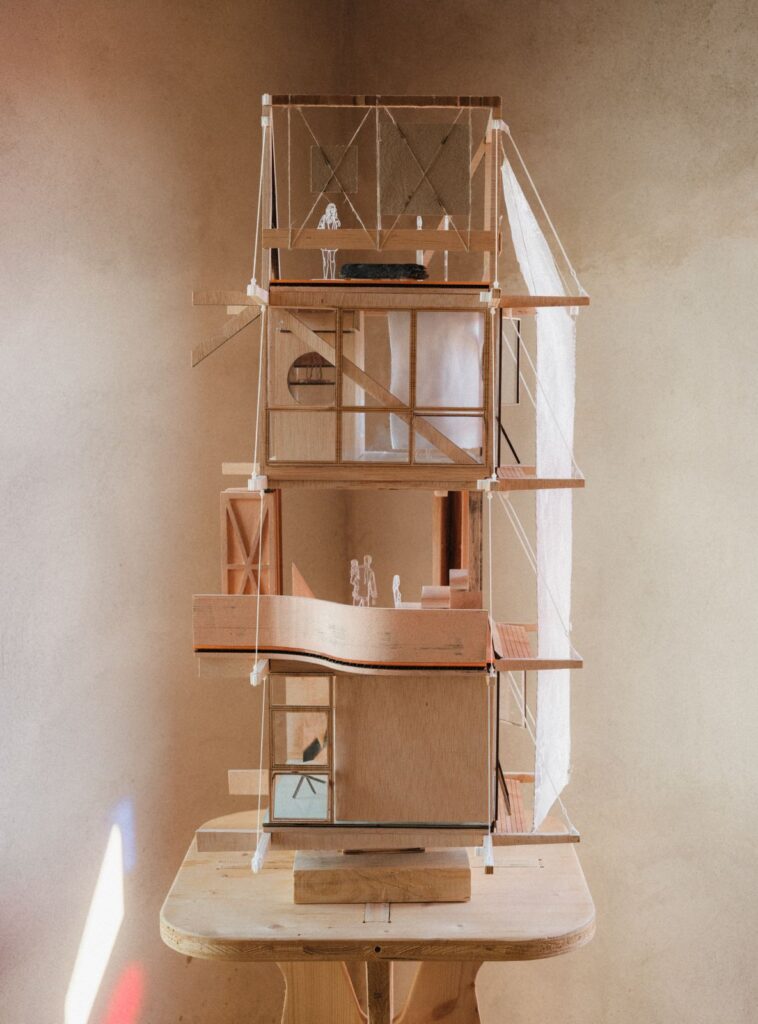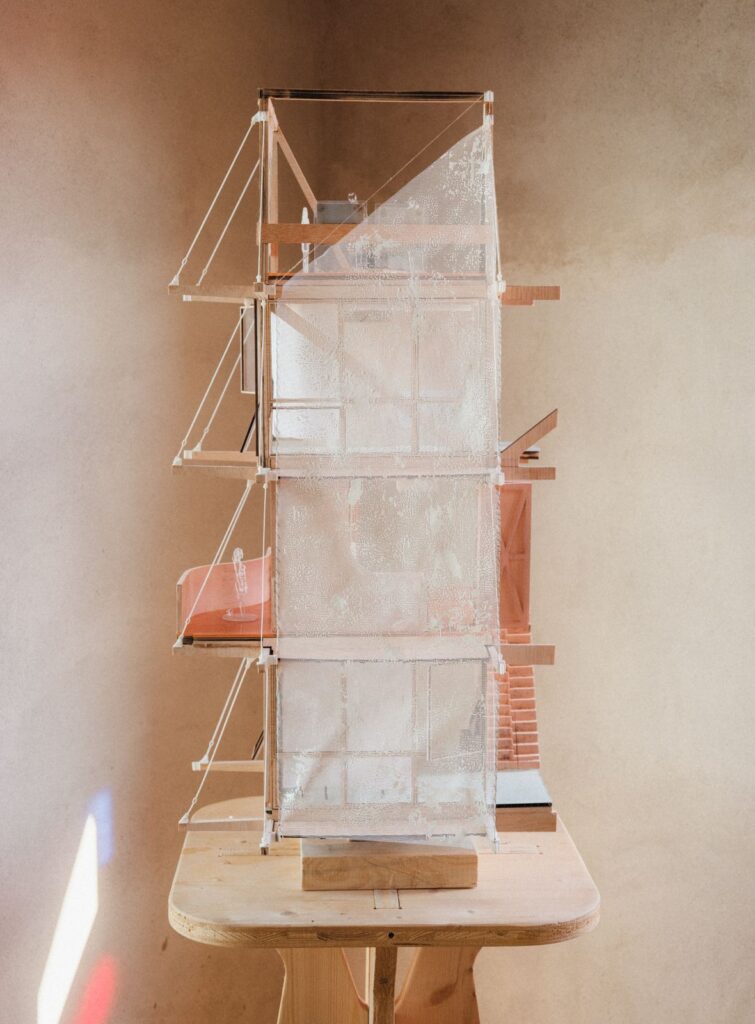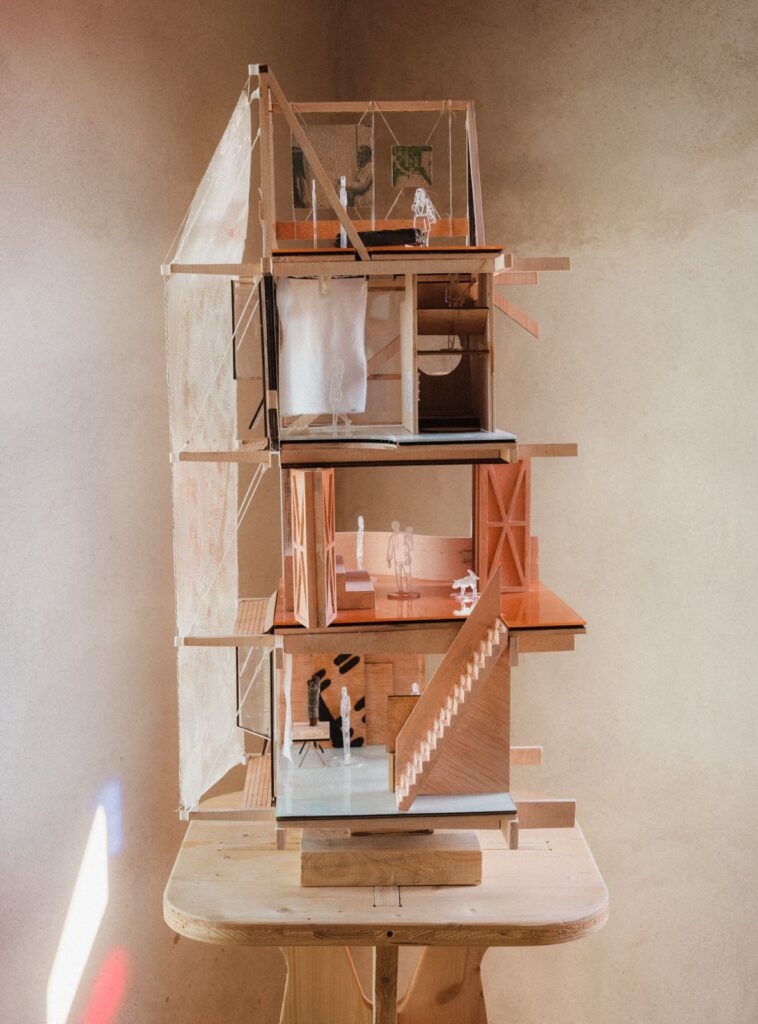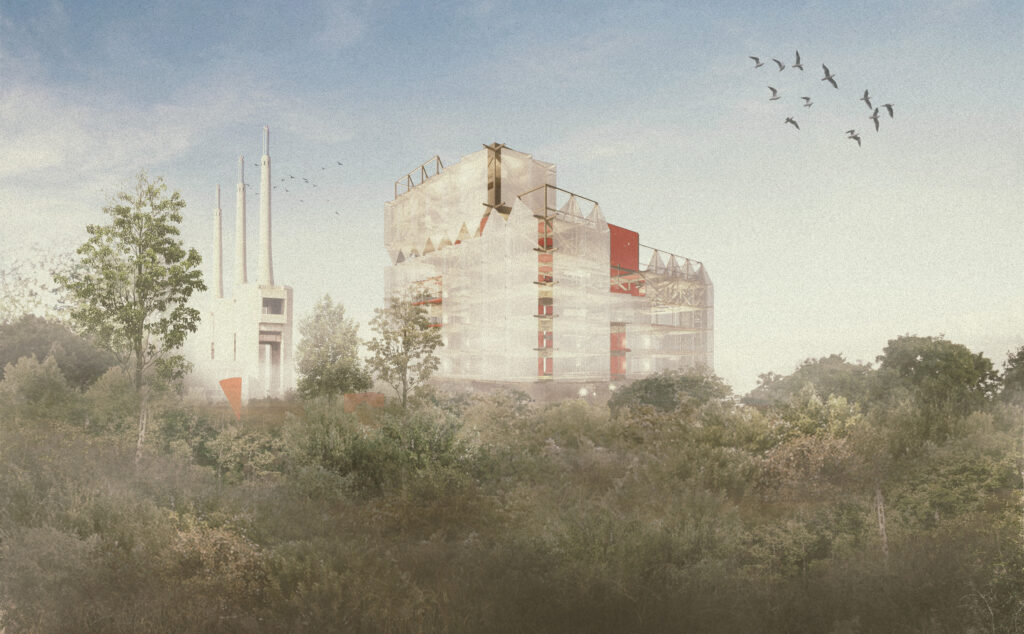
In the face of climate challenges, architecture is evolving beyond static walls into dynamic, responsive systems. The N.E.S.T. Research Center embodies this shift through its resilient envelope, an intelligent skin designed to regulate environmental conditions, harness energy, and enhance structural performance.

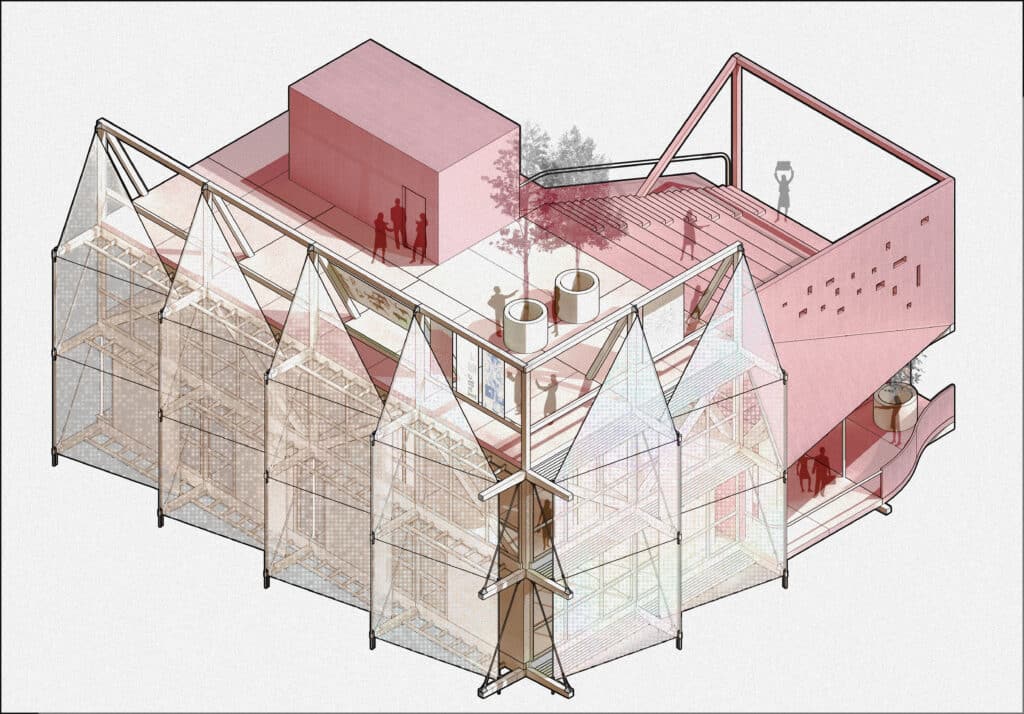
Envelope Development: A Multi-Layered Approach
The building envelope is developed across four distinct facades, each tailored to its orientation and climatic exposure. Through a combination of high-performance materials and innovative design strategies, the envelope enhances durability, energy efficiency, and occupant comfort.

PTFE Coated Glass Fiber Open Mesh Fabric
This ultra-light, durable polymer resists UV light, pollution, and algae growth, remaining virtually maintenance-free. Its transparent, tinted, or fritted options allow for strategic light control, reducing solar gain while maintaining visual connectivity.
Metal Tensile Bracing Cords
These high-strength steel or stainless steel cables resist wind loads and lateral forces, stabilizing the facade while keeping its structural profile minimal. The result is a visually light yet mechanically robust system.
Glulam Beams: A Natural Contrast
Engineered glulam beams offer long spans with reduced material use, reinforcing the lightweight facade system while adding warmth and textural contrast against the industrial elements.
Material Palette: Crafting a Sensory Experience
The building’s materiality is a harmonious blend of exposed wood, concrete, and metal, carefully curated for performance and aesthetics. Key elements include:

- Pine with a clear coat – Celebrates natural grain while ensuring longevity.
- Earth-toned concrete – Provides a grounding contrast to the wooden textures.
- Coloured concrete and stained wood – Highlights specific design features.
- Hot-dipped galvanized steel – Essential for corrosion resistance against coastal winds.
Harnessing Energy Through Smart Facades
One of the most innovative aspects of the N.E.S.T. Research Center is its piezoelectric textile facade. This permeable “bark” not only regulates sun and wind exposure but also harvests energy. Embedded piezoelectric patches convert wind movement into electricity, simultaneously diffusing harsh gusts and improving ventilation.
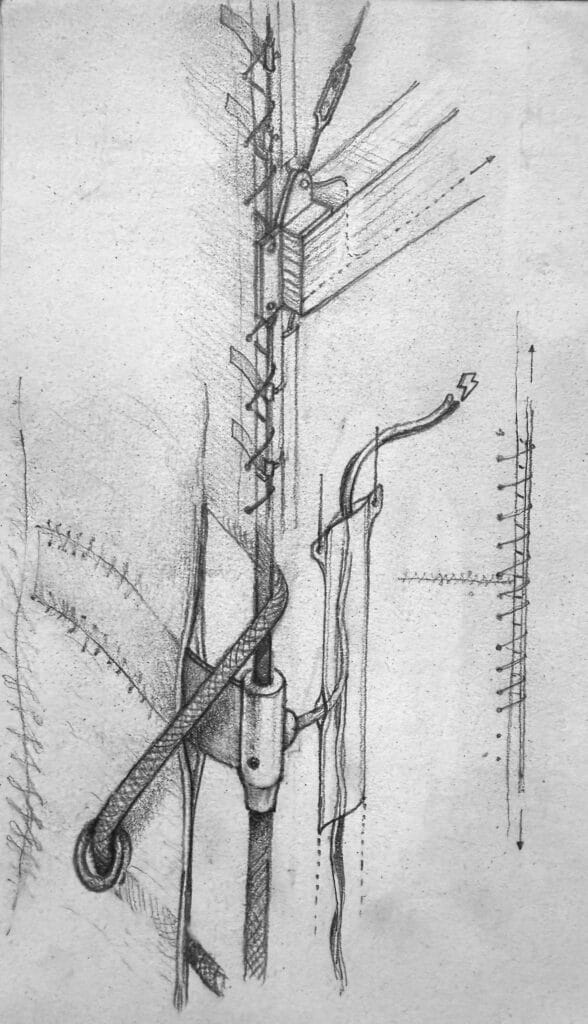

Optimized Thermal and Light Performance
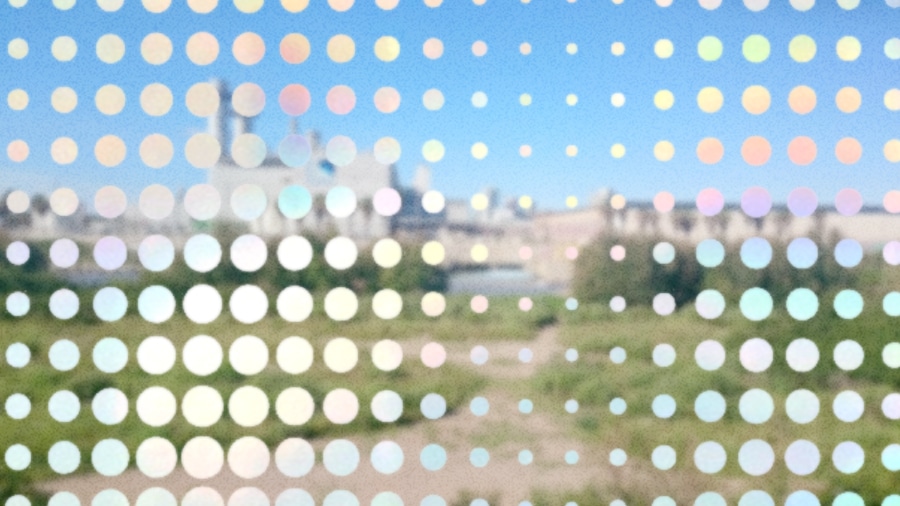
The facade employs an opacity gradient fritting pattern, tuned for optimal daylight and heat management:
- SW-SE facades – Reduce heat gain through minimized solar exposure.
- NE-NW facades – Maximize daylight penetration without significant overheating.
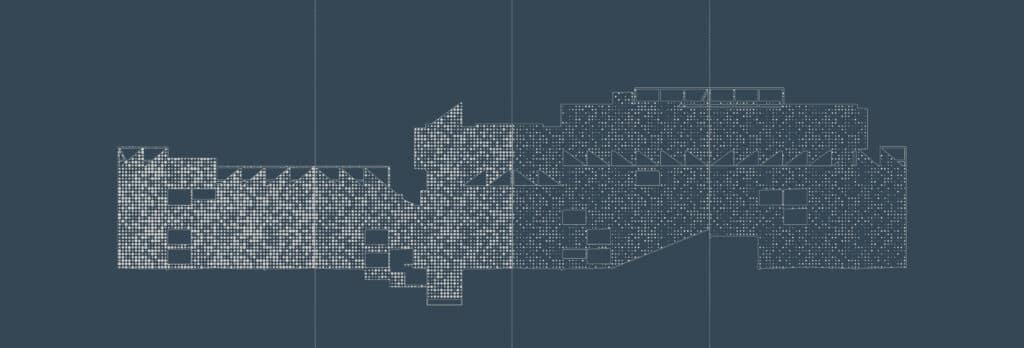
To further enhance interior comfort, reflective thermal-insulating polyester curtains modulate heat transfer. By blocking heat during the day and retaining warmth at night, these curtains significantly improve energy efficiency.

Section and details



A Future-Oriented Vision
The N.E.S.T. Research Center redefines the building envelope as an interactive and energy-generating interface. By combining adaptive materials, sustainable construction, and cutting-edge energy harvesting, the project sets a precedent for climate-responsive design.
As architecture moves towards a more regenerative future, the resilient envelope of N.E.S.T. serves as an innovative model for how built environments can dynamically interact with their surroundings—balancing aesthetics, performance, and sustainability in a single, cohesive system.
